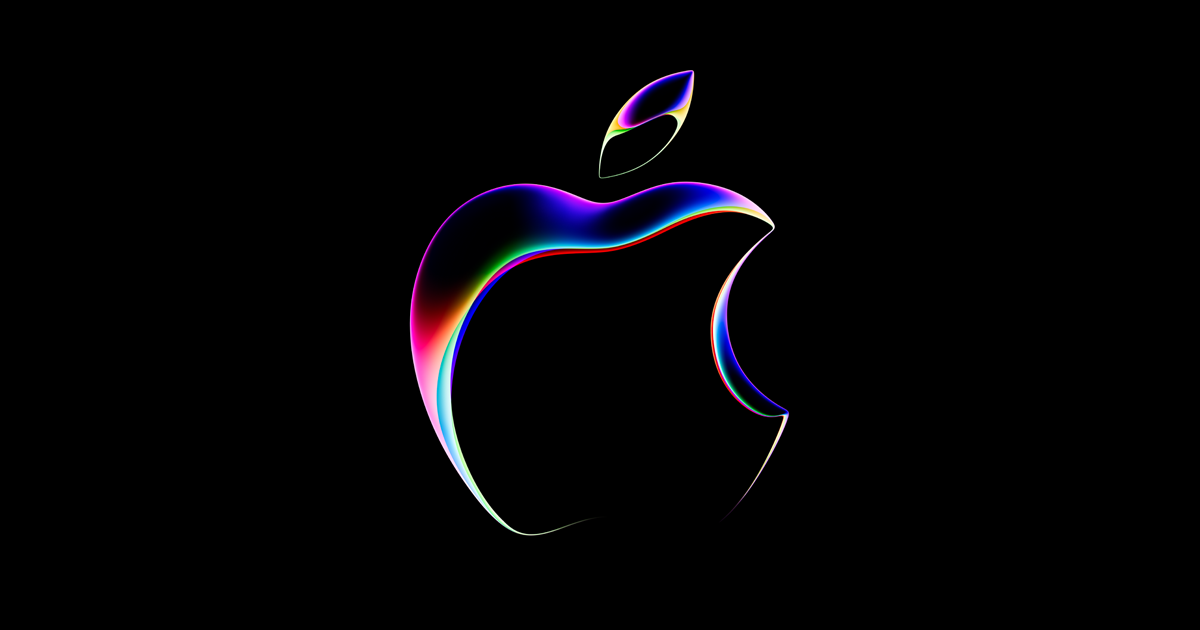Computer Electronic
Apple’s “Far Out” Event: iPhone 14, Apple Watch Ultra, and More

This article is designed for technology enthusiasts, Apple product users, and anyone interested in staying up-to-date with the latest advancements in the tech world. Readers seeking information about Apple’s recent product announcements, including the iPhone 14 series, Apple Watch lineup updates, and AirPods Pro 2nd Generation, will benefit from this content.
Introduction to Apple’s “Far Out” Event
Apple enthusiasts and tech aficionados around the world had their eyes glued to the screens as Apple’s much-anticipated “Far Out” event unfolded. This annual September extravaganza brought a barrage of new products. From groundbreaking iPhones to advanced Apple Watches and improved AirPods, the event was a treasure trove of innovation.
iPhone 14 Series: What’s New and Noteworthy
Among the highlights of the event were the iPhone 14 and iPhone 14 Plus. While retaining the sleek elegance that Apple is known for, these models brought notable improvements under the hood. The internal design tweaks aimed at enhancing thermal performance promise a smoother experience. Low-light photography received a boost, courtesy of an upgraded primary camera setup and improved TrueDepth camera capabilities. A standout feature is the Emergency SOS via Satellite, allowing users to reach emergency services even without a cellular connection or Wi-Fi.

Image by:https://www.cnet.com/
iPhone 14 Pro: Elevating Performance and Innovation
For those seeking the pinnacle of smartphone innovation, the iPhone 14 Pro models delivered in spades. With the removal of the notch and the introduction of the Dynamic Island—a display cutout that interacts with iOS 16 notifications—the Pro models wowed users. The A16 chip, touted as 40% faster than its competition, brought unprecedented speed. The camera systems saw substantial upgrades, including a remarkable 48MP main camera and 4K/30FPS Cinematic mode recording. Plus, the always-on display and other features further solidified the Pro’s premium status.

Photo by Thai Nguyen on Unsplash
Apple Watch Lineup Evolution: Series 8, SE, and Ultra
Apple’s wearable lineup underwent a transformation as well. The Apple Watch Series 8 stole the show with its body temperature tracking sensor—a feature poised to revolutionize health tracking. In addition, crash detection was introduced, offering a lifeline in emergency situations. The Apple Watch SE wasn’t left behind, receiving updates like a new nylon composite material case and the swift S8 chip. However, it was the Apple Watch Ultra that truly stood out. Designed for the active and adventurous, it boasted a sizable screen, titanium build for durability, and a customizable Action button to cater to different activities.

Image by:https://www.wired.com/
AirPods Pro 2nd Generation: Noise Cancellation and More
The much-awaited AirPods Pro 2nd Generation brought a host of enhancements to the audio experience. Powered by the H2 chip, these earbuds took noise cancellation to new heights, making them perfect for immersive listening. The Adaptive Transparency feature tackled the challenge of loud environments, and Personalized Spatial Audio elevated music enjoyment. Touch controls received an upgrade, and the addition of a speaker in the charging case was a thoughtful touch to prevent misplacement.

Image by:https://mashable.com/
Availability and Preorder Dates
Excitement was in the air as the event concluded, leaving everyone eager to get their hands on the new innovations. Preorders for the iPhone 14 series and AirPods Pro 2nd Generation were set to go live soon. The iPhone 14 and iPhone 14 Pro models would be available on specific dates. As for the Apple Watch lineup, Series 8 and SE were set to arrive shortly, while the Ultra variant was expected to grace the shelves a week later.
Conclusion: A Glimpse into the Future of Tech
Apple’s “Far Out” event wasn’t just a collection of product announcements; it was a glimpse into the future of technology. The innovations showcased in the iPhone 14 series, the evolution of the Apple Watch lineup, and the enhancements in the AirPods Pro 2nd Generation highlighted Apple’s relentless pursuit of excellence. As technology enthusiasts and users, we can’t help but anticipate the ways in which these new devices will reshape our daily lives. Also setting the stage for a new era of connectivity, convenience, and creativity. The “Far Out” event certainly lived up to its name, taking us to the edges of technological possibilities and beyond.
Computer Electronic
Troubleshooting Issues with Brother Printer Setup

Introduction
If you’re setting up a Brother printer for the first time or reconnecting it after a network change you may run into a variety of issues that can delay printing tasks. Brother printers are known for reliability and efficiency, but like any device, they can experience setup challenges that require proper troubleshooting.
In this comprehensive guide, we’ll explore the most common Brother printer setup issues and offer proven solutions to help you get your printer connected and running smoothly. If you need additional help with printer configuration or troubleshooting, you may reach out to +1-872-999-5616 for general setup assistance.
Brother Printer Not Connecting to Wi-Fi
One of the most frequent complaints during printer setup is difficulty connecting to a wireless network. This can happen for several reasons, from incorrect passwords to router frequency issues.
Solutions:
- Verify Wi-Fi Credentials: Ensure you are entering the correct network name (SSID) and password. Brother printers are case-sensitive when entering Wi-Fi passwords.
- Check Router Frequency: Many Brother printers do not support 5 GHz Wi-Fi networks. Make sure your router is broadcasting a 2.4 GHz network and that your printer is attempting to connect to it.
- Restart Printer and Router:Power-cycle both devices. Restarting often clears temporary configuration errors.
- Move the Printer Closer to the Router: Weak signals may prevent the printer from connecting. Keep the printer within 10–15 feet of the router during initial setup.
Brother Printer Not Showing on the Computer
You may find that your printer is connected to the network but does not appear on your Windows or macOS device.
Solutions:
- Install the Correct Driver: Visit the official Brother support page and download the correct driver for your printer model and operating system. Without the proper drivers, your system cannot communicate with the printer.
- Use the Brother Printer Setup Wizard (Windows): The Brother Installer and Network Connection Repair Tool can detect available printers on your network and configure them automatically.
- Add Printer Manually (macOS): Go to System Settings → Printers & Scanners → Add Printer.
If the printer shows up as Bonjour, select it and click Add.
Brother Printer Offline Error
This common issue prevents users from printing even when the printer is on and connected.
Solutions:
1. Set Printer as Default
On Windows:
- Go to Settings → Devices → Printers & Scanners
- Select your Brother printer → Set as default
2. Disable “Use Printer Offline”
In the printer queue window, make sure this option is not selected.
3. Restart the Print Spooler Service (Windows)
Sometimes print jobs get stuck:
- Press Win + R → type services.msc
- Restart Print Spooler
4. Reinstall the Printer on Network
Remove and re-add the printer in your system settings to refresh its connection.
Brother Printer Not Printing Even After Setup
You may have installed the printer correctly, yet it refuses to print.
Solutions:
- Check Ink or Toner Levels: Low or empty cartridges can prevent printing. Check the printer’s display panel for warnings.
- Clear Print Queue: A stuck print job will block new tasks. Clear the queue through the printer settings on your computer.
- Check Paper Tray and Paper Size: Ensure the paper tray is loaded correctly and that the selected paper size matches what’s installed.
- Update Firmware: Outdated firmware can cause print errors. Visit Brother’s support site to download updates.
USB Connection Problems
If you’re setting up a wired connection and the printer doesn’t respond, a USB issue may be to blame.
Solutions:
1. Try a Different USB Port
Use a port directly on your computer, not through a USB hub.
2. Replace the USB Cable
Damaged or non-compatible USB cables can prevent communication.
3. Reinstall the USB Driver
On Windows:
- Open Device Manager
- Expand “Universal Serial Bus controllers”
- Uninstall the USB printing support driver
- Reconnect the printer to reinstall the driver automatically
Brother Printer Setup Fails on Mobile Devices
Many users try to connect their Brother printers using the Brother iPrint&Scan app but face issues.
Solutions:
- Connect Both Devices to the Same Wi-Fi Network: Your printer and mobile phone must be on the same SSID.
- Update the Brother iPrint&Scan App: Outdated apps may fail to detect printers.
- Reconfigure Wi-Fi Direct Mode: Some Brother printers support Wi-Fi Direct for direct mobile-to-printer communication. Enable it through the printer’s control panel, and then connect your phone to the printer’s broadcasted network.
Final Thoughts
Setting up a Brother printer should be straightforward, but technical hurdles can occasionally get in the way. By following the troubleshooting steps above, you can resolve most common issues—from Wi-Fi connectivity problems to driver installation errors. Maintaining updated drivers, using compatible network settings, and ensuring clean hardware conditions will help your printer run smoothly long after setup.
If you need additional help with troubleshooting steps or printer configuration, you can reach out to +1-872-999-5616 for general assistance. For official support, always verify contact information directly on Brother’s website.
Computer Electronic
How to Call HP® for Printer Support: Your Complete Guide

Introduction
In today’s fast-paced digital environment, printers play a critical role in keeping our home and office workflows running smoothly. Whether you rely on an HP LaserJet, DeskJet, OfficeJet, ENVY, Smart Tank, or any other HP model, occasional technical issues are inevitable. When those problems arise, knowing how to call HP for printer support—or a trusted support line—can save you time, frustration, and downtime.
If you need fast help with your HP printer, you can contact reliable support at +1-805-666-1236. This guide will walk you through everything you need to know before calling, what information to have ready, common troubleshooting steps, and how to ensure your support call is quick and effective.
Why Calling HP® Printer Support Matters
HP printers are known for their durability and performance, but like all technology, they can sometimes encounter issues such as:
- Printer not responding
- Paper jams or feed errors
- Ink or toner problems
- Wireless connectivity issues
- Driver installation failures
- Slow printing or print queue delays
- Error codes on the printer display
- Problems after firmware updates
Calling a knowledgeable support representative ensures you receive expert guidance tailored to your specific model and issue. While online forums and articles can be helpful, a live support call often provides faster, more accurate, and step-by-step solutions. For immediate help, you can reach dependable HP® printer support at +1-805-666-1236.
When Should You Call HP® Printer Support?
Some printer issues can be fixed with simple steps. However, you should call HP support or a certified assistance line if:
- You’ve tried basic troubleshooting and nothing works: If restarting the printer, checking cables, or reinstalling the driver doesn’t solve the issue, a deeper technical problem may be present.
- Your printer shows unusual or unknown error codes: Error messages like “E3,” “0x00000C1,” “Carriage jam,” or “Print system error” often require expert diagnosis.
- Your HP printer stops printing entirely: A complete print failure could signal software conflicts, firmware issues, or hardware malfunction.
- Wireless printing won’t connect: Wi-Fi setup problems are common, especially after changing routers or passwords.
- Your printer is under warranty: If your device is still covered, support can help you repair or replace it without extra cost.
- You suspect a hardware issue: Strange noises, overheating, or frequent paper jams could mean mechanical problems. When in doubt, it’s always better to contact support rather than risk worsening the issue. Call +1-805-666-1236 to get expert help anytime.
What Information to Have Ready Before Calling HP Support
To speed up your support experience, prepare the following information:
- Printer Model Number: Found on a sticker on the back or bottom of your printer (e.g., HP OfficeJet Pro 9015, LaserJet P1102w).
- Serial Number: Usually located near the model number and helps verify warranty status.
- Your Operating System: Windows 10/11, macOS, Linux, ChromeOS, etc.
- Type of connection: USB cable, Wi-Fi, or Ethernet.
- A description of the issue: The more specific you are, the faster support can help.
- Recent changes: New router? New ink? Firmware update? These clues are useful. Having this information ready ensures your support call is smooth and efficient.
How to Reach HP Printer Support
There are several ways to contact support for HP printers. However, for quick, convenient help—including troubleshooting, driver assistance, and printer setup—you can call +1-805-666-1236. Phone support gives you real-time guidance, which is often more effective than browsing online solutions.
Why Phone Support Is Often Best
- Immediate answers
- Step-by-step troubleshooting
- Personalized solutions
- No waiting for email replies
- Faster diagnosis of hardware issues
If you’re experiencing any kind of printer trouble, dialing +1-805-666-1236 will connect you to support that can help you resolve the issue quickly.
Common HP Printer Issues Support Can Help With
Whether your issue is simple or complex, support specialists can walk you through the solution. Below are some of the most common printer problems they can resolve:
1. Printer Not Printing
This may be caused by:
- Driver issues
- Print queue errors
- Connectivity problems
- Outdated firmware
Support can guide you through clearing queues, reinstalling drivers, and resetting the printer.
2. Paper Jams
Technicians can help:
- Locate hidden paper fragments
- Clean paper rollers
- Fix alignment issues
3. Wireless Setup Problems
Support can help reconnect your printer to:
- Home Wi-Fi networks
- Office networks
- Mobile printing apps
4. Ink System Errors
If your printer shows “Ink System Failure” or isn’t recognizing cartridges, a support technician can help recalibrate or reset the ink system.
5. Slow Printing
Performance issues often relate to:
- Driver settings
- Network speed
- Print quality settings
- Firmware bugs
6. Scanner Not Working
Support can assist with HP Smart App issues, driver repairs, and scanner alignment. Whatever the problem, calling +1-805-666-1236 will connect you with someone who can guide you through the solution.
Tips for a Successful Support Call
To make your support experience as smooth as possible:
- Keep your printer nearby: You may need to:
- Restart it
- Open panels
- Check cables
- Run test prints
- Stay calm and patient: The more clearly you explain your issue, the better the support specialist can help.
- Follow each step exactly: Even if a step seems basic, it may be essential for diagnosing the issue.
- Ask questions: If you don’t understand something, ask for clarification.
- Write down solutions: Keeping notes helps if the issue returns.
Why Choose Phone Support Over Online Articles?
While many online guides exist, they cannot match the expertise of a trained specialist. Here’s why phone support stands out:
- Faster solutions: No need to search through endless articles.
- Customized guidance: Your support agent tailors advice to your exact model.
- Safe troubleshooting: Experts help avoid steps that could damage the printer.
- Hands-on assistance: You get real-time instructions, not generic tips.
For the quickest and most reliable help, calling +1-805-666-1236 is one of the easiest ways to get your printer working again.
Preventing Future Printer Problems
To keep your HP printer running smoothly, follow these preventive tips:
- Keep firmware updated: HP regularly releases updates that improve security and performance.
- Use high-quality ink or toner: Low-quality cartridges can damage your printer or cause print defects.
- Clean your printer regularly: Dust and ink buildup can cause jams and alignment issues.
- Avoid overloading the paper tray: Use the recommended paper type and do not exceed tray limits.
- Restart your printer occasionally: A quick reset can solve many minor issues. If you ever run into problems again, just call +1-805-666-1236 for assistance.
Final Thoughts: Get Reliable Support for Your HP Printer
HP printers are dependable machines, but technical issues can still occur. Whether you’re experiencing error codes, connectivity issues, ink problems, or print failures, expert assistance can help you get back on track quickly. Calling a knowledgeable support line ensures real-time troubleshooting, accurate diagnosis, and a hassle-free experience.
For fast, friendly, and effective HP® printer support, you can contact +1-805-666-1236 for immediate help. A short call could save you hours of frustration—so don’t hesitate to reach out whenever your HP printer needs assistance.
Computer Electronic
Need Help? Here’s How to Call Brother For Support

Introduction
In today’s fast-paced digital world, printers are essential for both personal and business needs. Whether you’re printing important documents, photos, or labels, encountering a technical issue can be frustrating. Brother printers are known for their reliability, but even the best devices sometimes need professional support. If you’re wondering how to contact Brother for printer support, this guide will walk you through every step, including how to reach them by phone.
Why You Might Need Brother Printer Support
Brother printers are versatile and widely used, but users may face common issues that require professional assistance. Some of these issues include:
- Paper jams: Even high-quality printers can experience stuck paper.
- Connectivity problems: Wireless or network issues can prevent printing.
- Error codes: Brother printers may display specific error messages that are difficult to interpret.
- Driver installation issues: Incorrect or outdated drivers can hinder printer performance.
- Print quality problems: Faded prints, streaks, or smudges can indicate a need for troubleshooting.
When these problems occur, contacting Brother’s official support team is often the fastest and most reliable solution.
How to Call Brother for Printer Support
Calling Brother printer support is straightforward. The company provides dedicated phone lines staffed by trained technicians who can help troubleshoot and resolve your printer issues quickly.
Step-by-Step Instructions
- Locate your printer model and details: Before calling, have your printer model number, serial number, and purchase information ready. This information helps the support team provide faster and more accurate assistance.
- Dial the Brother support number: You can reach Brother printer support by calling +1-872-999-5616. This line connects you directly to a team of certified professionals.
- Choose your service option: Upon calling, you may hear an automated menu. Follow the prompts to select the type of support you need, such as technical troubleshooting, warranty inquiries, or software assistance.
- Explain your issue clearly: Provide a detailed description of the problem. Mention any error codes, unusual sounds, or recent changes in your printer setup.
- Follow the technician’s instructions: The support team may guide you through step-by-step troubleshooting, including checking connections, reinstalling drivers, or performing maintenance tasks.
- Confirm resolution and next steps: If the issue cannot be resolved over the phone, the technician may arrange for repair or replacement under warranty.
Benefits of Calling Brother Support
Contacting Brother directly for printer support offers several advantages:
- Expert guidance: You’ll speak to trained professionals who understand Brother printers inside and out.
- Quick problem resolution: Many common issues can be fixed during the call.
- Warranty protection: Official support ensures that repairs or replacements remain covered.
- Peace of mind: Knowing you’re speaking with the manufacturer reduces the risk of misinformation.
Other Ways to Contact Brother Support
While calling is often the fastest method, Brother provides multiple support channels to suit different preferences:
- Online Support: Visit the Brother Support website to access FAQs, manuals, software downloads, and troubleshooting guides.
- Live Chat: Some regions offer live chat support, allowing you to communicate with a technician via text.
- Email Support: You can submit a support request via email if the issue is non-urgent or requires documentation.
- Social Media: Brother maintains active social media accounts where you can sometimes receive guidance or updates on service availability.
Preparing for Your Call
To make your call as efficient as possible, follow these preparation tips:
- Have your printer nearby: You may need to follow instructions in real time.
- Gather documents: Warranty information, receipts, and previous service records can be useful.
- Check for updates: Ensure your printer firmware and software are up to date.
- List observed symptoms: Write down what issues you’re experiencing, including error codes or messages.
Common Brother Printer Issues and How Support Can Help
When you call Brother at +1-872-999-5616, you may encounter assistance with the following common problems:
1. Paper Jam Problems
Brother printers often display a “Paper Jam” error when paper gets stuck in the rollers. A technician can guide you on:
- Safely removing stuck paper
- Cleaning rollers to prevent recurrence
- Adjusting paper settings for smoother operation
2. Connectivity Issues
Wireless printing issues are frequent, especially with networked devices. Support can assist with:
- Reconnecting the printer to Wi-Fi
- Configuring network settings
- Updating firmware for improved connectivity
3. Error Codes and Messages
Brother printers may display error codes such as “LC3013” or “E68.” These codes indicate specific issues like low ink or hardware problems. The support team can interpret these messages and provide actionable solutions.
4. Print Quality Problems
If your prints are streaky, faded, or blurry, the support team can:
- Guide you through cleaning the print heads
- Recommend appropriate paper types
- Adjust printer settings for optimal output
5. Driver and Software Support
Incorrect drivers or outdated software can prevent printing. Brother technicians can:
- Help install or update drivers
- Resolve software conflicts
- Ensure compatibility with your operating system
When to Call Brother Printer Support
You should contact Brother support when:
- The printer displays persistent error codes
- Paper jams occur frequently
- Print quality is poor despite troubleshooting
- Connectivity problems cannot be resolved
- You need guidance on warranty repairs or replacements
Tips for a Smooth Support Experience
To ensure your support call is productive:
- Be patient and clear: Describe the problem accurately and answer questions fully.
- Follow instructions carefully: Technicians often provide precise steps that need to be executed exactly.
- Take notes: Record the guidance provided in case the issue recurs.
- Schedule follow-ups: If necessary, arrange for a technician visit or replacement service.
Conclusion
Having a reliable printer is crucial for both home and business tasks, and Brother provides excellent customer support to keep your devices running smoothly. By calling +1-872-999-5616, you can access expert guidance, troubleshoot issues efficiently, and ensure your printer is performing at its best. Whether it’s a paper jam, connectivity problem, error code, or print quality concern, Brother’s professional support team is ready to assist you every step of the way.
Don’t let printer problems slow you down reach out to Brother support today and get your printer back to perfect working condition.
-
Business2 years ago
Cybersecurity Consulting Company SequelNet Provides Critical IT Support Services to Medical Billing Firm, Medical Optimum
-
Business2 years ago
Team Communication Software Transforms Operations at Finance Innovate
-
Business2 years ago
Project Management Tool Transforms Long Island Business
-
Business2 years ago
How Alleviate Poverty Utilized IPPBX’s All-in-One Solution to Transform Lives in New York City
-
health2 years ago
Breast Cancer: The Imperative Role of Mammograms in Screening and Early Detection
-
Sports2 years ago
Unstoppable Collaboration: D.C.’s Citi Open and Silicon Valley Classic Unite to Propel Women’s Tennis to New Heights
-
Art /Entertainment3 years ago
Embracing Renewal: Sizdabedar Celebrations Unite Iranians in New York’s Eisenhower Park
-
Finance3 years ago
The Benefits of Starting a Side Hustle for Financial Freedom






























